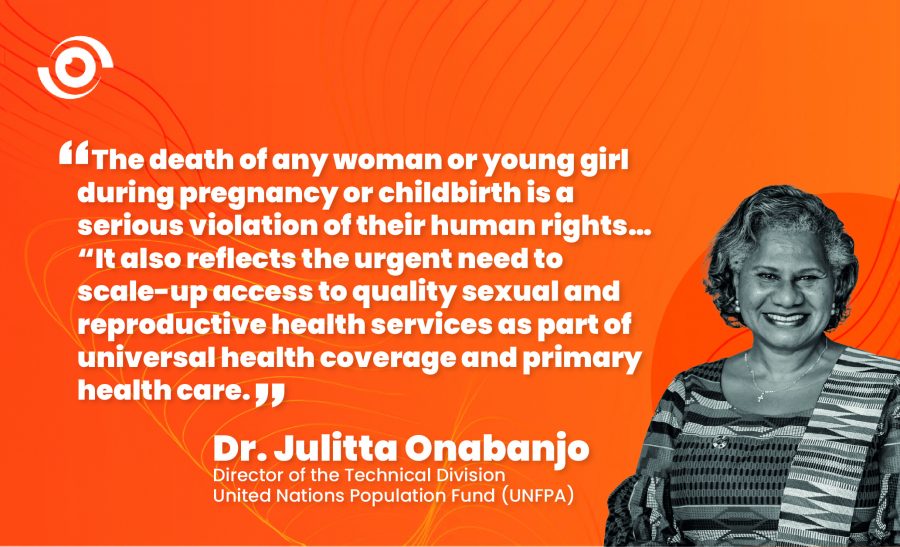Safiya Shuaibu Isa [Lead Writer]
The 1994 International Conference of Population and Development in Cairo, Egypt prioritised Sexual and Reproductive Health Rights (SRHR) for women and girls, highlighting its relevance to individual rights. Thirty years later, while great progress has been made, expanded access to SRHR services has not progressed at the required pace and has lately stalled due to conflict, economic constraints, inequality and climate change. At the recent launch of the State of the World Population Report 2024, stakeholders explored strategies to address inequalities that perpetuate systemic and structural barriers to sexual and reproductive health and rights (SRHR) for women and girls worldwide.
At the report launch, the chairman of the National Population Commission Honourable Nasir Isa Kwarra underlined the significance of the report published by the United Nations Population Fund (UNFPA). Titled ‘Interwoven Lives Threads of Hope: Ending Inequalities in Sexual and Reproductive Health and Rights,’ the report considered individual perspectives on well-being over mere statistical data.
Dr Natalia Kanem, the Executive Director, UNFPA, highlighted that international collaboration had led to a notable decrease in unintended pregnancies, and a reduction in HIV infections by one-third over the past 15 years. Despite these strides, India and Nigeria still record relatively high maternal mortality rates. During the launch, Dr Kanem highlighted that the advancements in reducing maternal mortality in these countries alone accounted for a 34% global decrease in maternal deaths since 2000. This progress indicates that these nations have a crucial role in the global effort to eliminate maternal mortality.
According to the UNFPA report, roughly half of pregnancies in low- and middle-income countries (approximately 112 million annually) are unintended, and about 77% are experienced by at least 218 million women of reproductive age in low- and middle-income countries who want to avoid a pregnancy but are not using or have access to modern method of contraception.
Unequal access to SRHR services remains a compounding factor in maternal mortality rates. Quite simply, if there is improved access to safer sex education for preventing sexually transmitted infections and unplanned pregnancies, family planning, HIV services, and fertility protection for individuals living with HIV maternal mortality rates have greater chances of improvement.
Countries could benefit from women’s access to sexual health and reproductive rights, the report noted. As “reproductive autonomy enhances women’s contributions to the national economy. According to a modelling study in Kenya, Nigeria and Senegal, per capita income would increase by 31% to 65% between 2005 and 2030 if all the current unmet need for modern contraception were met in these countries,”
Ensuring equal access for Nigerian women
Nigeria has experienced significant population growth since its last National Population Census in 2006, with an increase from over 140 million to more than 220 million people. This growth is largely attributed to high fertility rates among adolescents and young adults, leading to a situation where at least 70% of the population is under 30 years old. The demographics also indicate a low uptake of modern contraceptives. Currently, Nigeria’s fertility rates stand at around 7 births in rural areas and 4 in urban areas, pointing to unequal access to SRHR services across the nation.
In Nigeria, adolescent childbearing is fast becoming a significant concern, as nearly a million births occur each year among girls aged 10 to 14, with over 12 million births recorded for girls aged 15 to 19. These alarming figures emphasise the urgency to tackle inequalities in healthcare access for women and girls. Additionally, they highlight the necessity for continued dialogue on critical topics such as bodily autonomy, contraceptive accessibility, and safeguarding against gender-based violence.
Breaking down the barriers
For Nigeria’s health sector to convert existing data into meaningful programmes that benefit vulnerable populations, it must prioritise the execution of comprehensive, people-focused services addressing the wide-ranging components of SRHR services. This necessitates the creation of first, enabling environments for all to access modern contraceptives without fear of shame, and then encourage community engagement to ensure that programmes are tailored to the various needs of the people they serve.
For example, a 2019 focus group discussion organised by Nigeria Health Watch, involving in-school and out-of-school adolescents aged 15–25, revealed a significant desire among the participants for non-judgmental access to SRHR services. Addressing existing obstacles and providing accurate information can help deter harmful practices and ill-informed choices that stem from insufficient knowledge and understanding. The report also spotlighted the pivotal role parents/caregivers and teachers can play in fostering sexual and reproductive health education and awareness.
The Nigerian government has shown commitments to reducing maternal and newborn mortality rates by revamping and expanding primary healthcare through the National Health Sector Investment Renewal Plan. This strategy aims to accelerate progress by adopting a sector-wide approach, focusing on enhancing primary healthcare, increasing health insurance coverage, and improving the quality of care. The plan presents an opportunity to reinforce the availability of a comprehensive range of family planning services and ensure adequate midwife staffing in every accredited facility, including those in remote and hard-to-reach areas. This makes the UNFPA’s State of World Population report essential as it offers a comprehensive understanding of the complex relationship between population dynamics and sustainable development. It also provides valuable insights into how demographic trends impact the world and how policies can effectively address these changes.

A world where everyone including women and adolescents has equitable and affordable access to SRHR services is possible, however, there must be more strategic efforts to dismantle the identified barriers.